
VISIT TO KITT PEAK NATIONAL OBSERVATORY
Posted: 24 March 2012
On 23 March 2012, my wife, Laurraine, and I, along with several alumni and staff from Indiana University, had the opportunity for another special visit to Kitt Peak National Observatory, courtesy of the Indiana University College of Arts and Sciences (Mike's alma mater). For some of us (like Laurraine and Mike), this was our 7th special visit! For others, it was their first time at Kitt Peak.
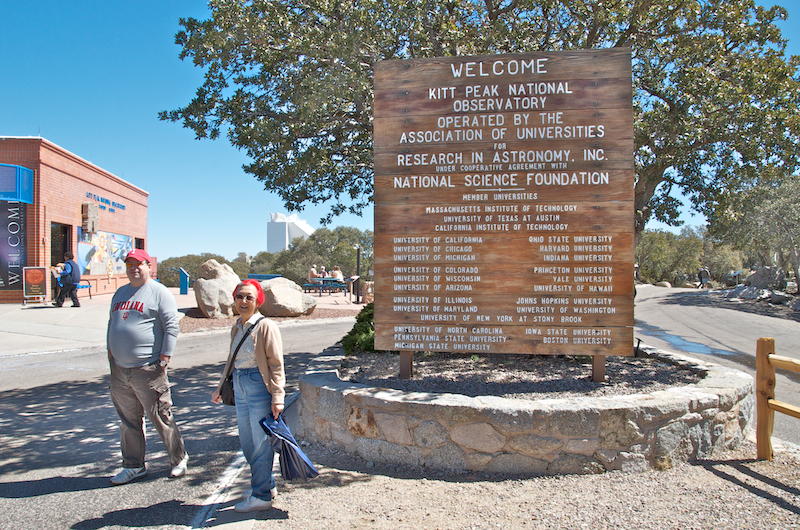
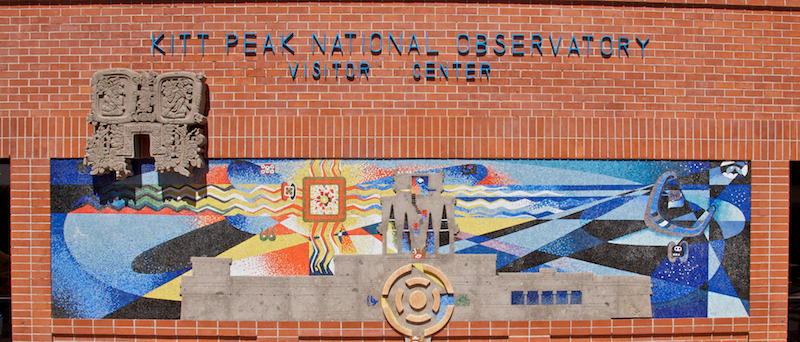
McMath-Pierce Solar Telescope
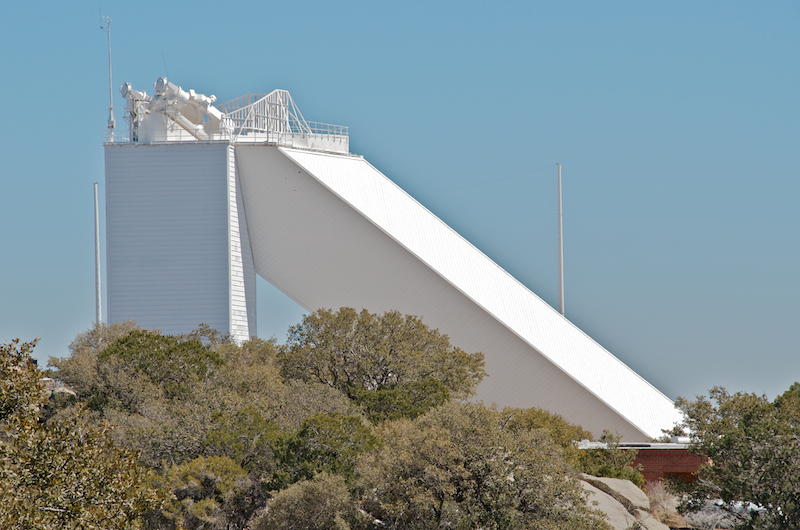
WIYN 3.5m Telescope Observatory
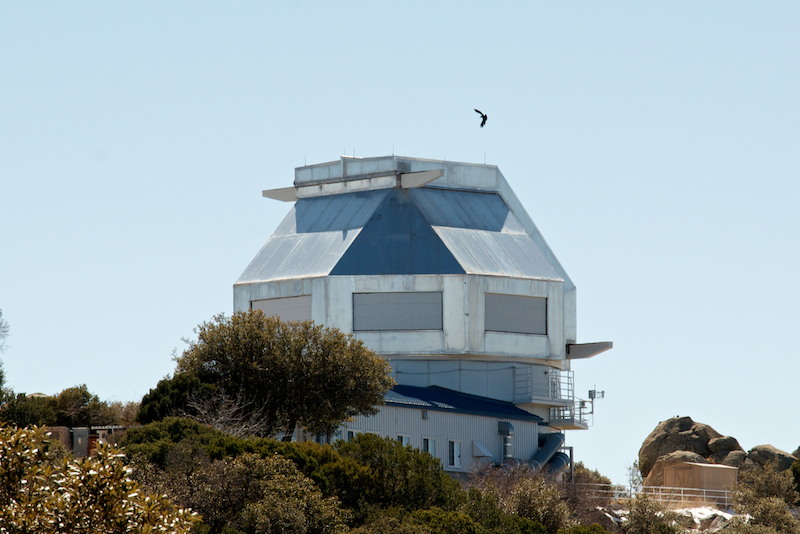
We started with a wonderful geology talk on Kitt Peak mountain and the surrounding area by John Reynolds (IU astronomy and geology alumnus) and a visit to the Mayall 4-meter telescope led by John Salzer, Chair of the IU Astronomy Department.
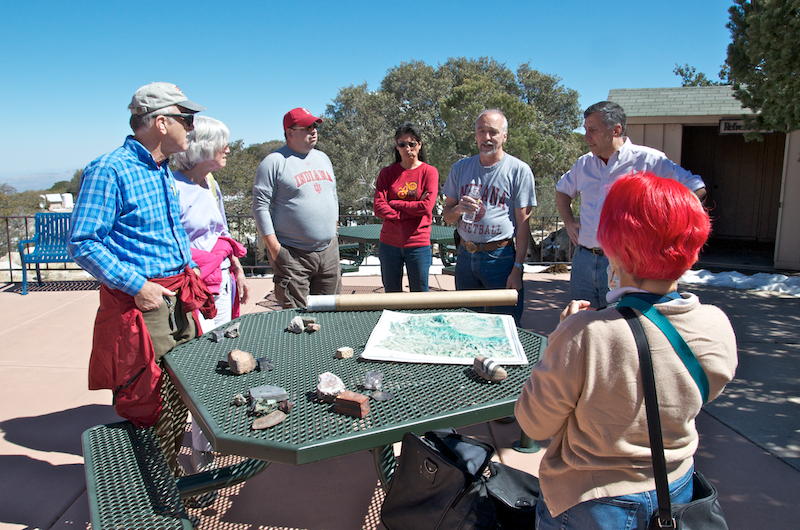
Steward Observatory 2.3m Telescope Observatory (left), Mayall 4m Telescope Observatory (right)
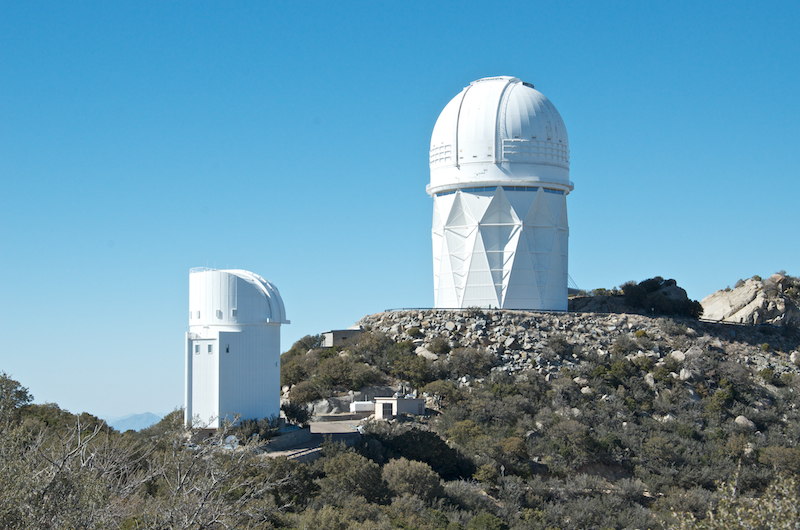
Steward Observatory 0.9m Telescope Observatory (left), Steward Observatory 0.5m Telescope Observatory (right)
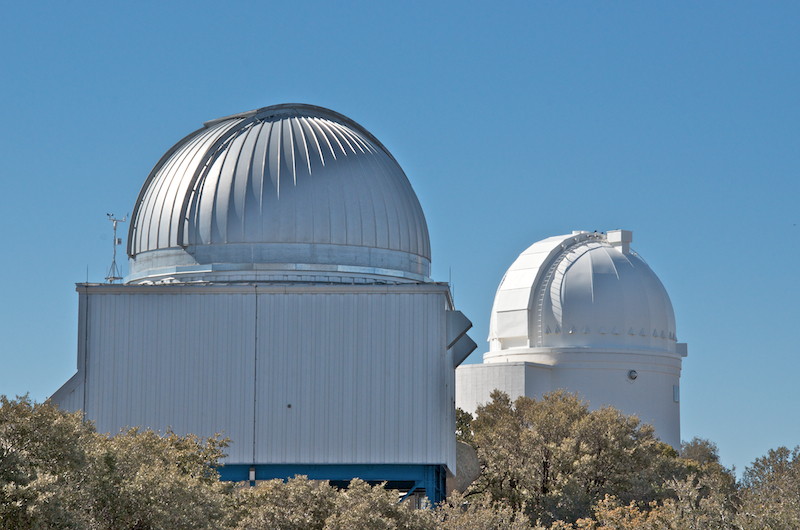
NROA VLBA Complex
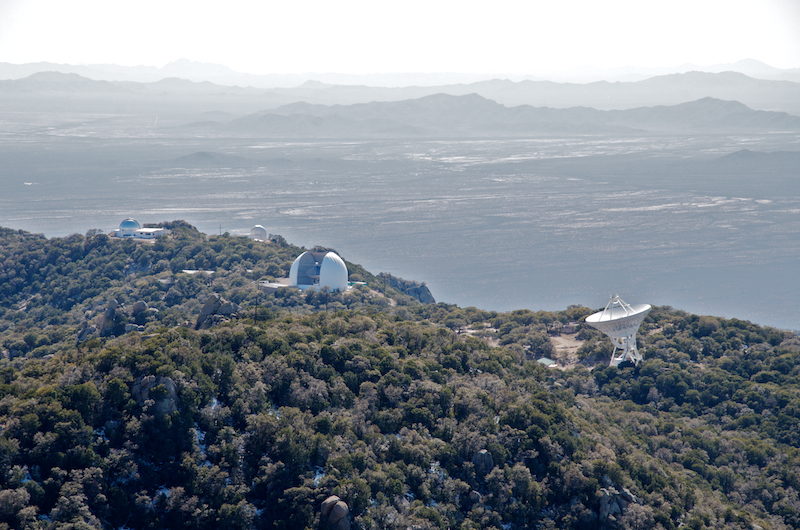
Kitt Peak National Observatory Complex

Mayall 4m Telescope
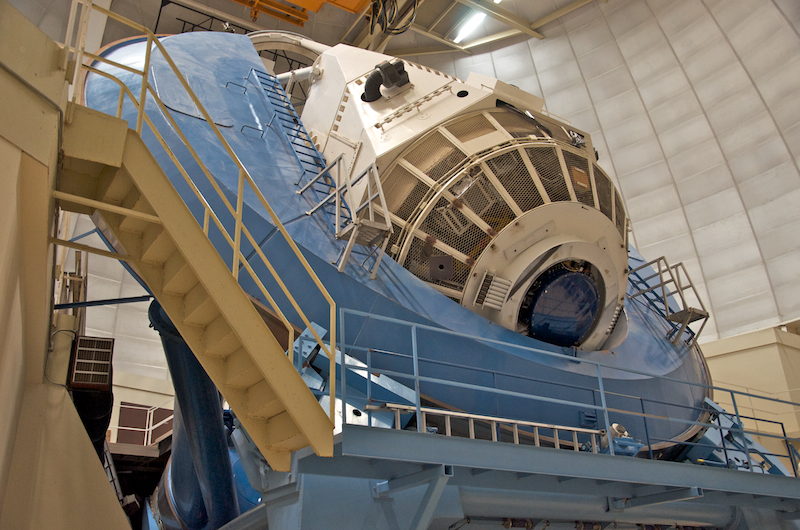
The group looking at the Mayall 4m Telescope
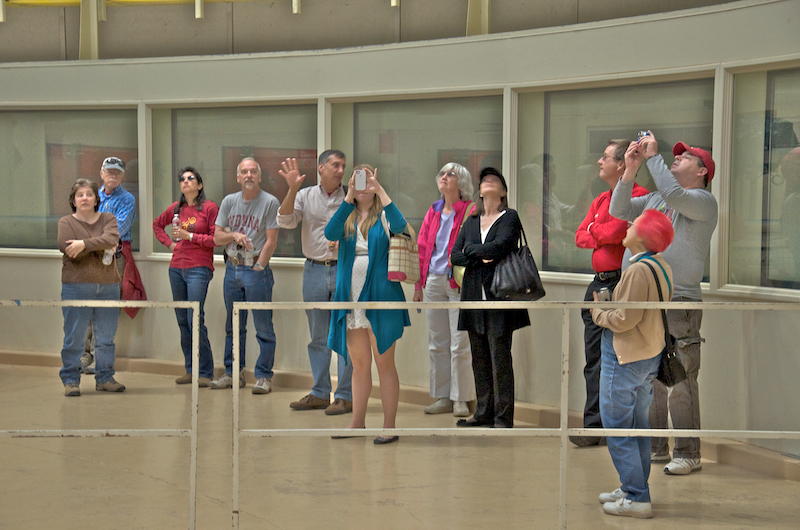
Inside the Mayall 4m Telescope Pier
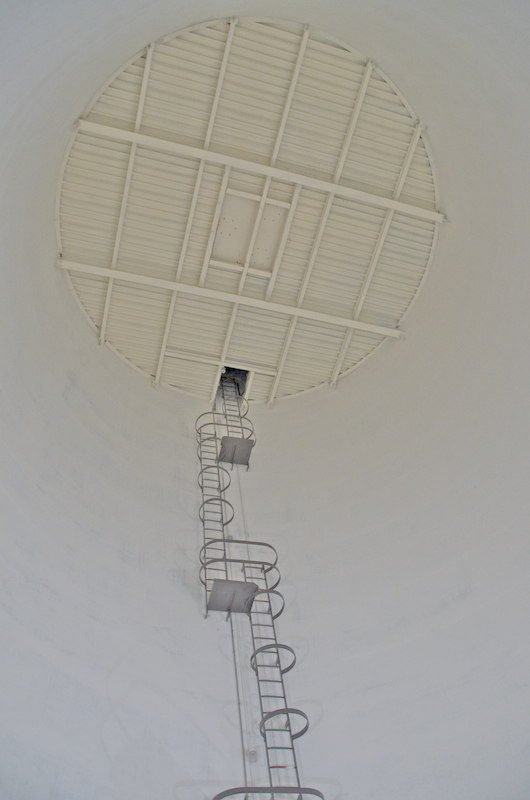
20in Telescope Observatory (for Public Observing)
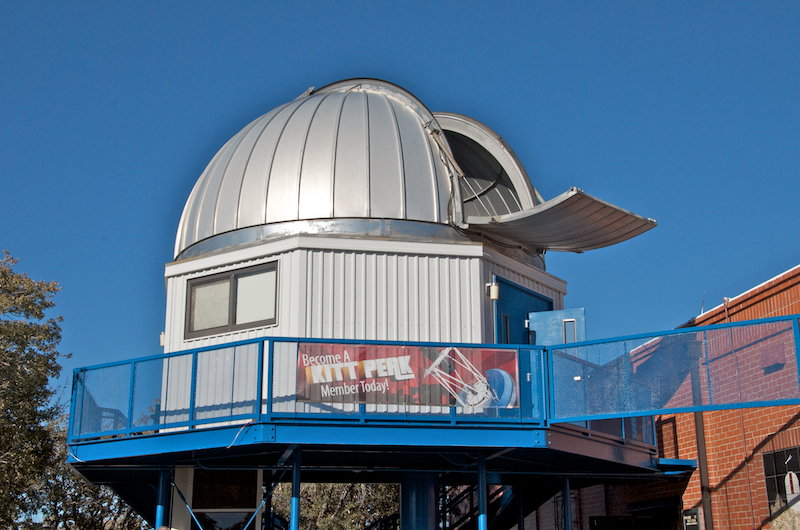
20in Telescope (for Public Observing)
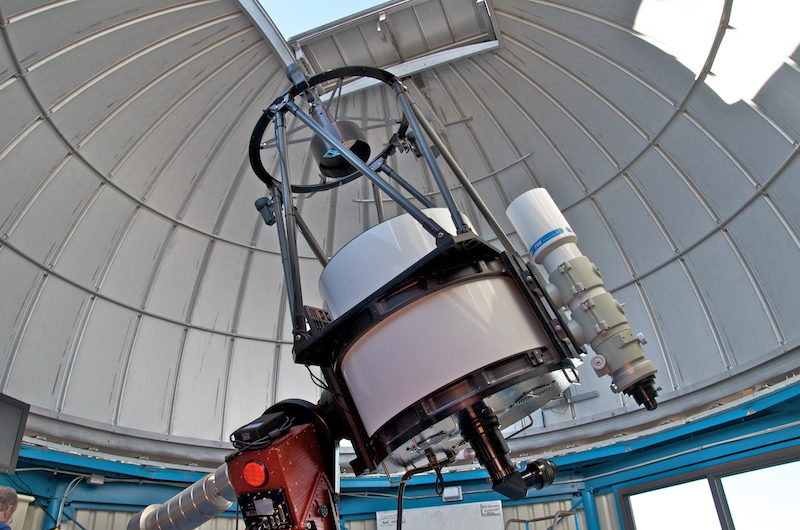
After a catered dinner, we received an update on the IU Astronomy Dept and WIYN. We then walked to the 2.1m telescope:
Several domes as sunset approached

2.1m Telescope Observatory
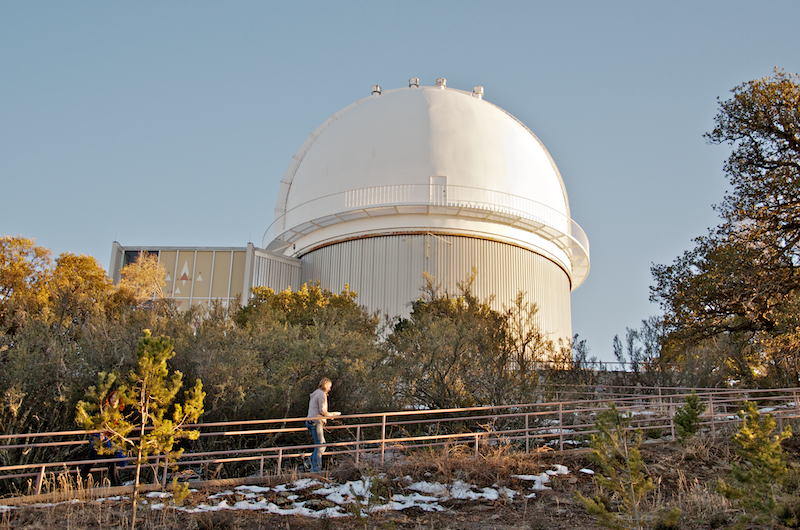
2.1m Telescope
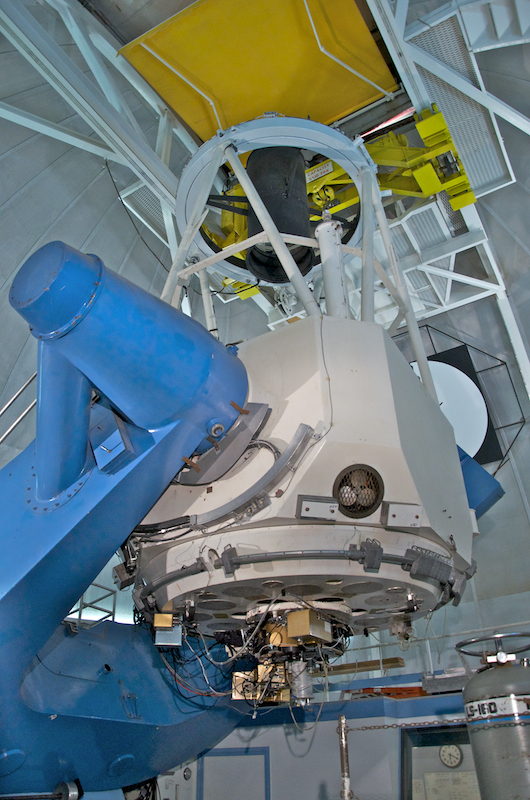
The Group listening to an IU Grad Student at 2.1m Telescope
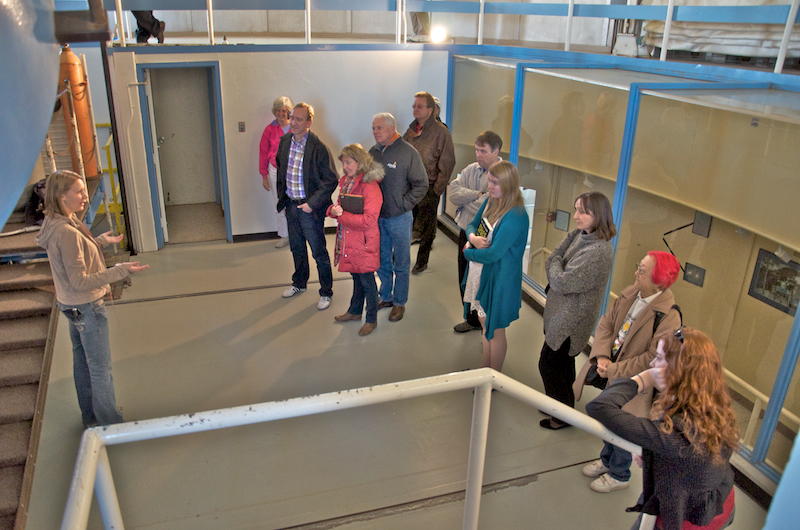
We viewed the sunset from the catwalk of the 2.1m telescope dome.
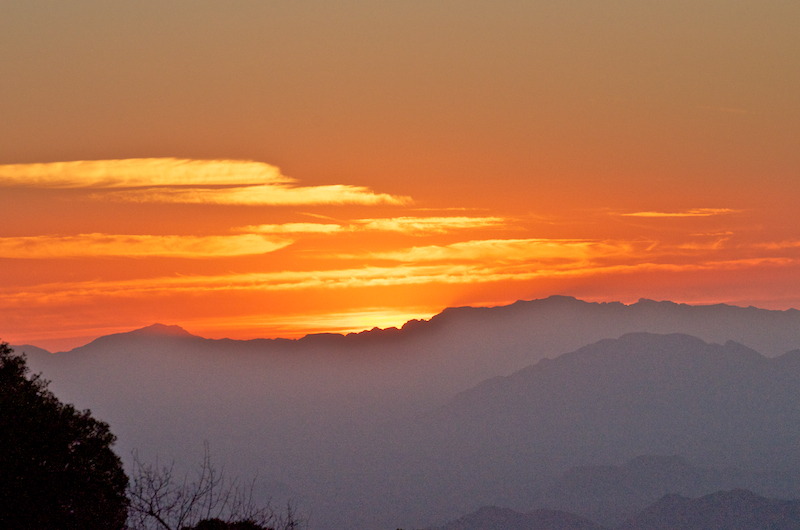
After sunset, we headed over to the WIYN 3.5-meter telescope.
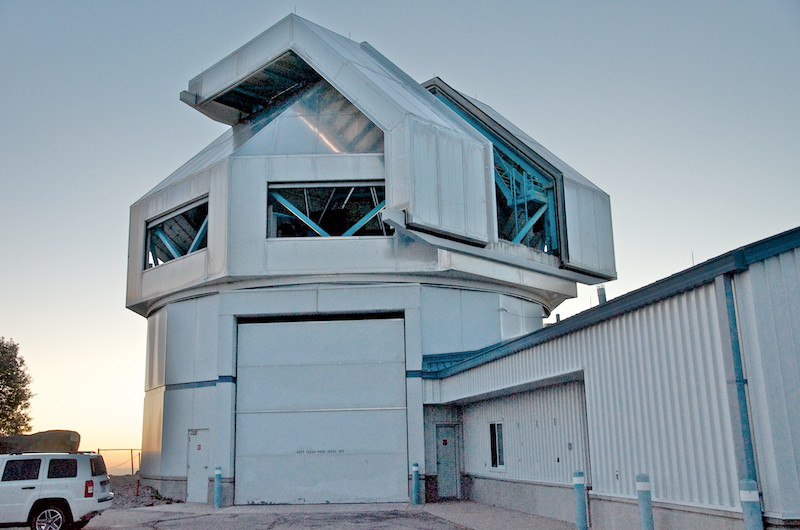
The Group inside the WIYN 3.5m Telescope Control Room
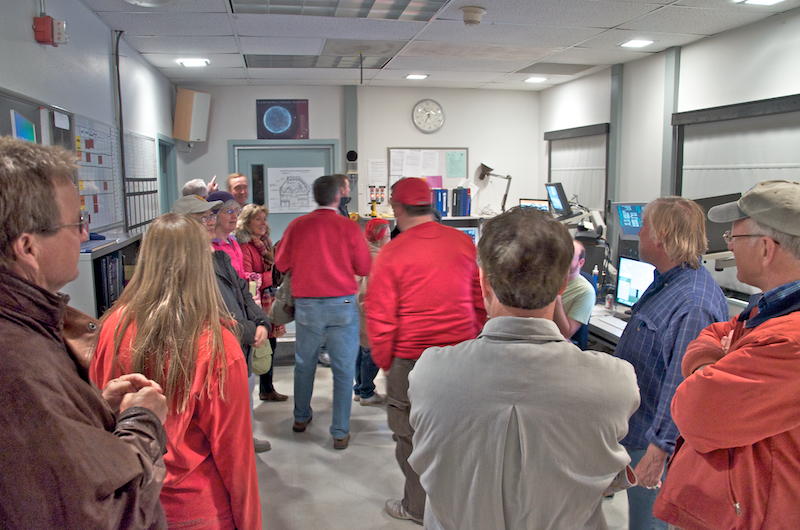
One of the WIYN 3.5m Telescope Operators
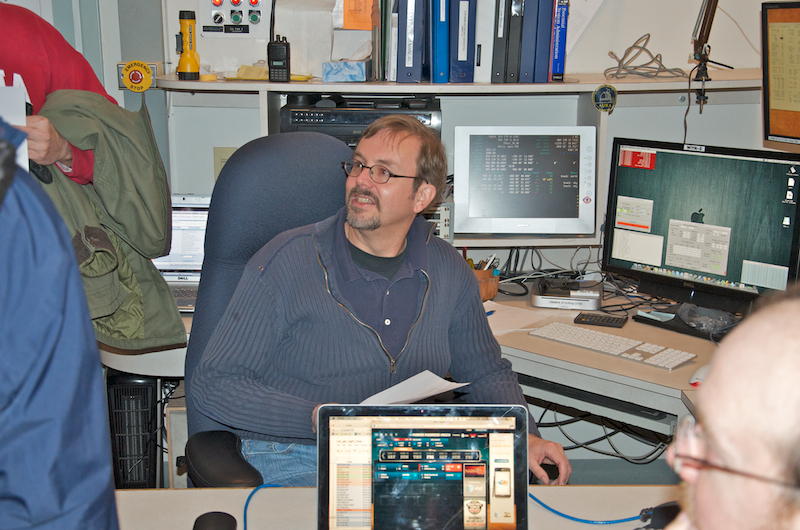
John Salzer describing the WIYN 3.5m Telescope
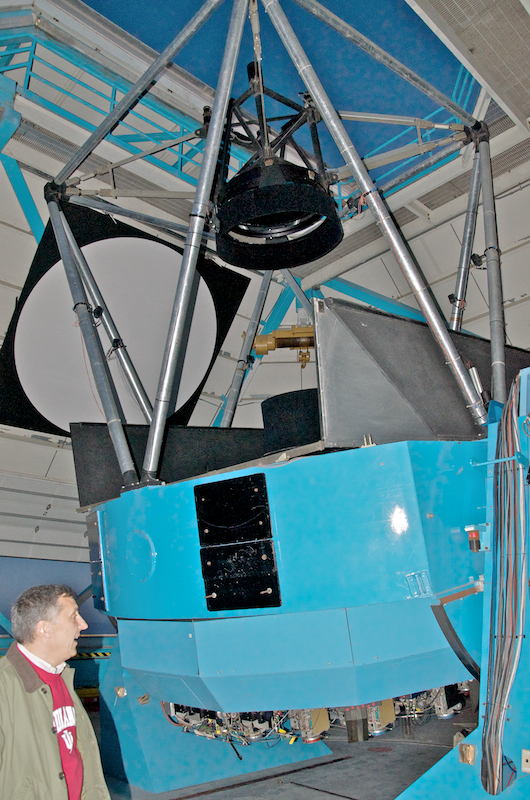
The Group admiring the WIYN 3.5m Telescope
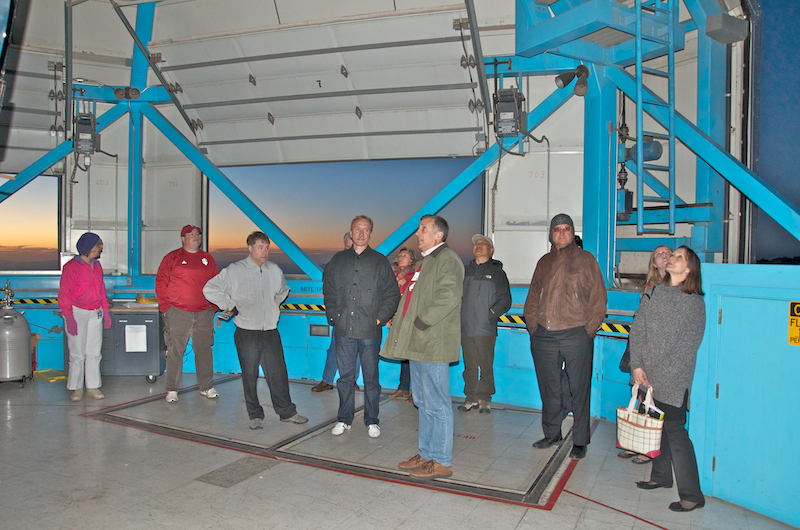
The 2" eyepiece (center) we would use to observe with the WIYN 3.5m Telescope
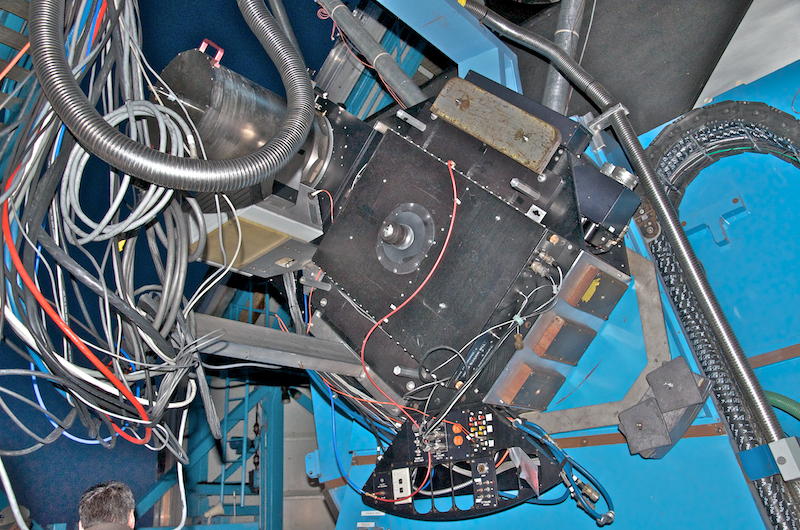
After dark we began observing with the telescope. It is always amazing and a thrill to view planets and faint deep sky objects through a 138-inch diameter mirror telescope! We observed:
Venus
Jupiter
M42 (Great Orion Nebula)
M1 (Crab Nebula)
NGC2158 (open cluster)
NGC2392 (Eskimo Nebula; planetary nebula)
Mars
M95 (Barred-spiral galaxy and the new supernova SN 2012aw)
NGC3242 (Ghost of Jupiter; planetary nebula)
NGC4565 (edge-on galaxy)
M51 (Whirlpool Galaxy; spiral galaxy)
M3 (globular cluster)
Saturn
I took several photographs from inside the observatory and even attempted some astrophotography at the 2" eyepiece using the "afocal" technique with a D7000 DSLR. Of course, these handheld photos through the eyepiece don't do justice to what we could actually see, but they should give you an idea of what it is like observing through a 3.5 meter telescope.
Venus (top) and Jupiter (above the horizontal bar) through the observatory slit
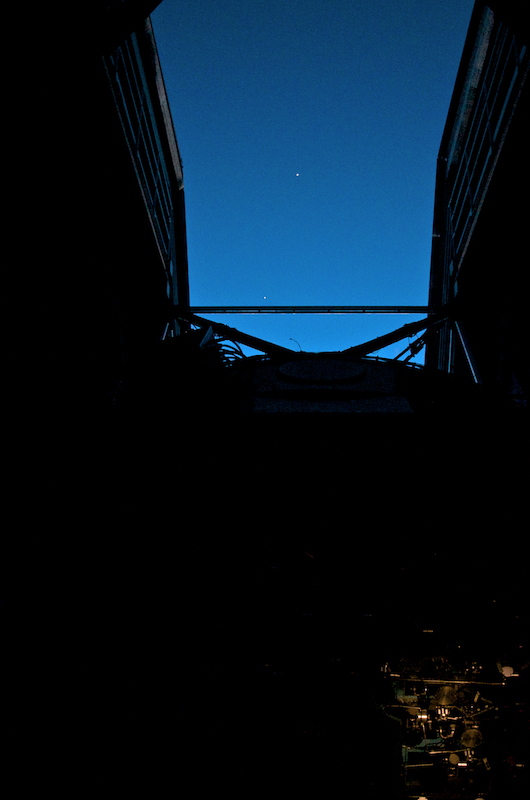
View of the western sky through two observatory openings, thin crescent moon on the right

Venus in the 3.5m telescope
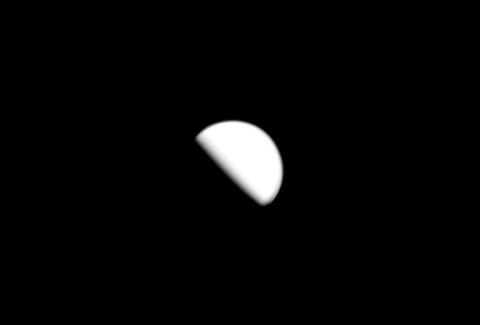
Jupiter and moons Europa (left) and Io (right) in the 3.5m telescope
Great Red Spot is barely visible at the left limb in the large (lower) South Equatorial Belt
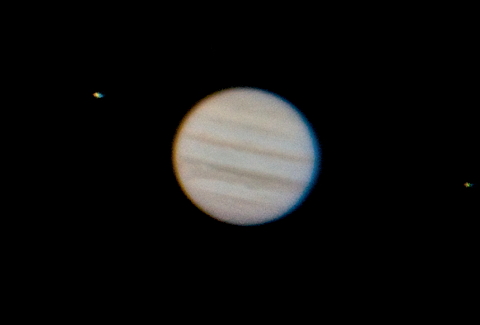
M42 Trapezium Stars in the 3.5m telescope

Mayall 4m Telescope Observatory (yes, those are stars)
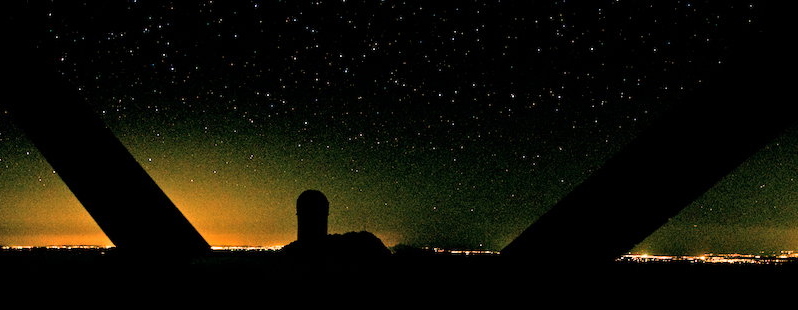
NGC2158 (open star cluster) in the 3.5m telescope
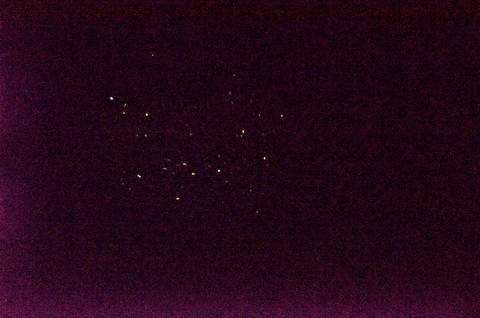
NGC2392 (Eskimo Nebula) in the 3.5m telescope
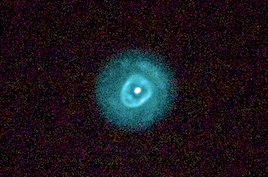
Mars in the 3.5m telescope, North Polar Cap visible at top
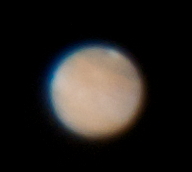
M95 (galaxy nucleus at left) and Supernova SN 2012aw (bright star) in the 3.5m telescope
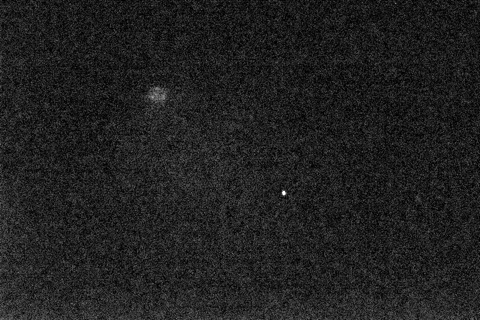
NGC3242 (Ghost of Jupiter) in the 3.5m telescope
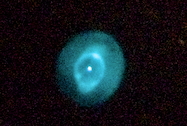
M3 (globular cluster) in the 3.5m telescope
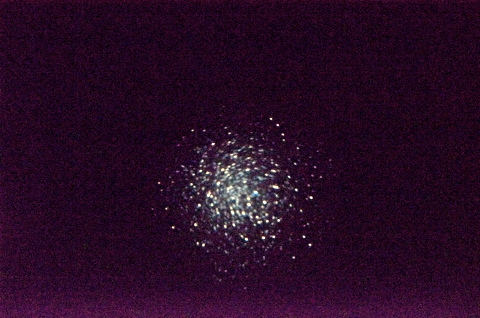
Saturn in the 3.5m telescope
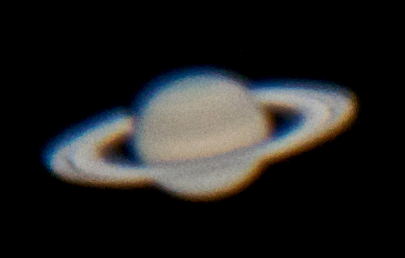
We ended the night's observing at the 3.5m telescope about 2300 MST, gave the telescope back to the professional astronomers, and began the two hour drive back home. A superb and exciting night.
As a memento of this special visit, everyone received a nice IU/WIYN water bottle:
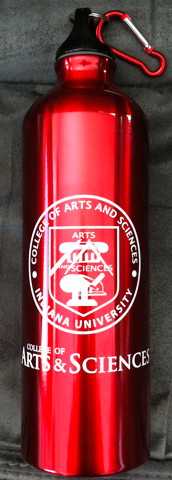
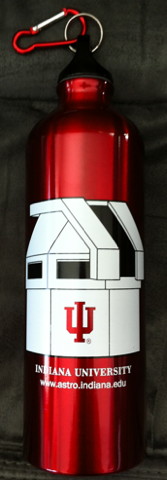
Many thanks to Jeff Stuckey and his staff, the IU Astronomy Department, and the WIYN Staff for another very special night at the 3.5-meter telescope.
See our other Kitt Peak visit reports:
See all of our Observatory Visits.
Visit Mike's Cassiopeia Observatory web site.
Go to our Home Page.